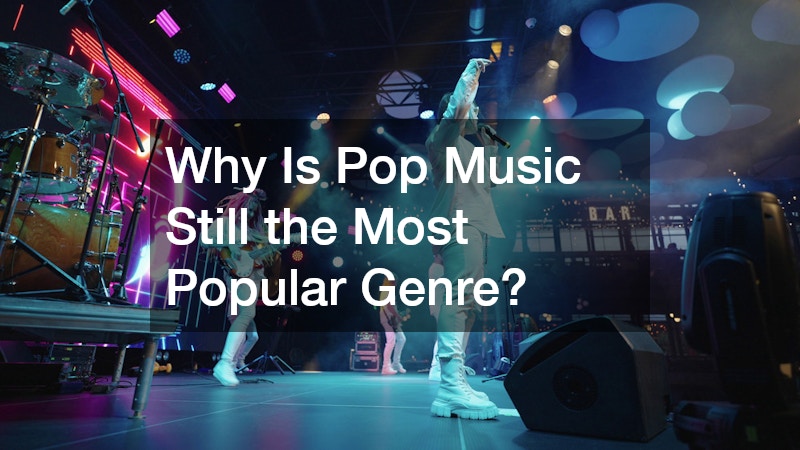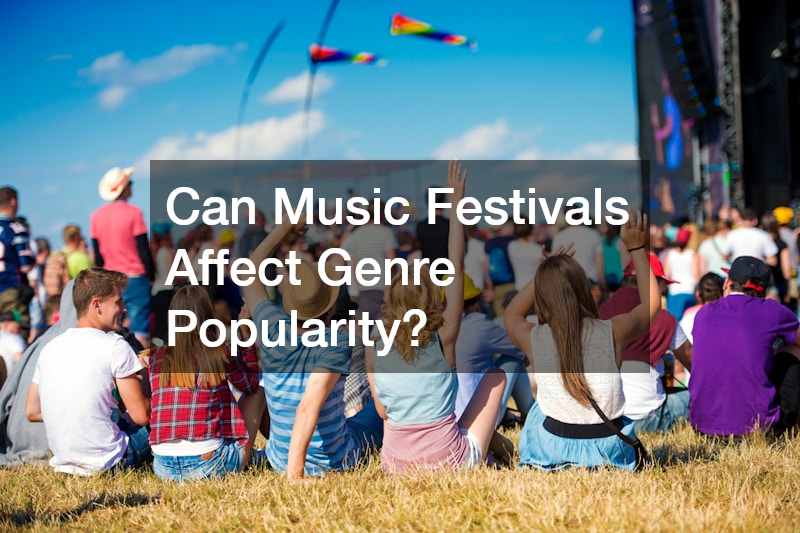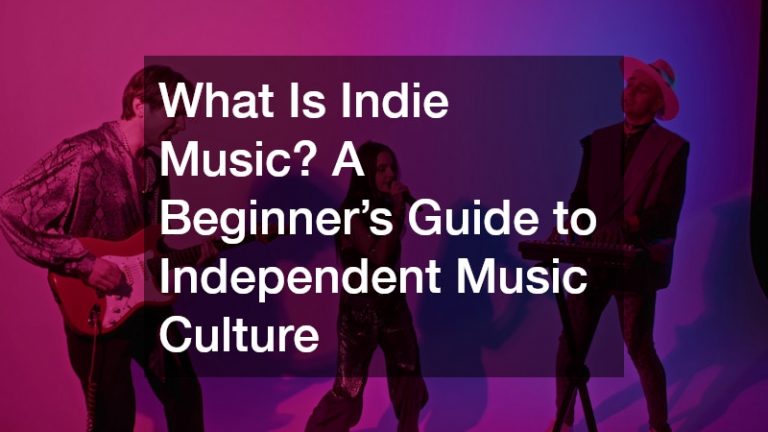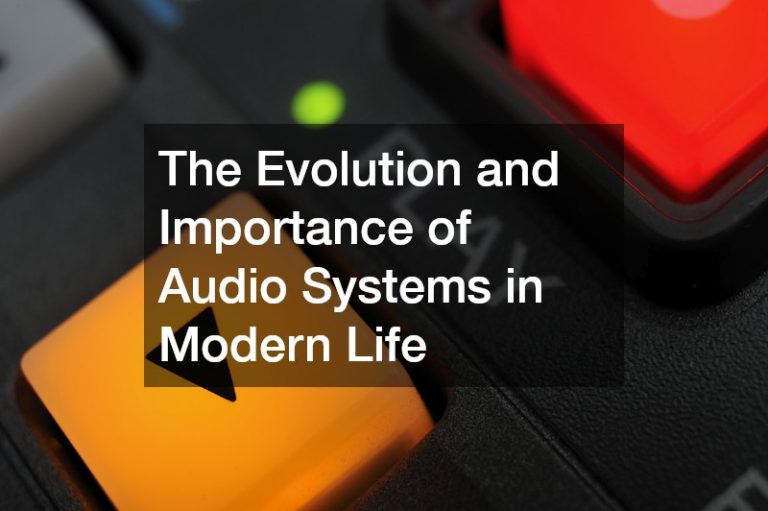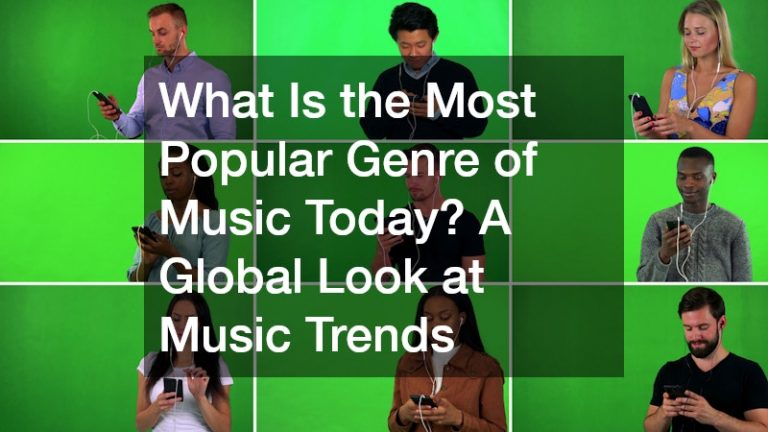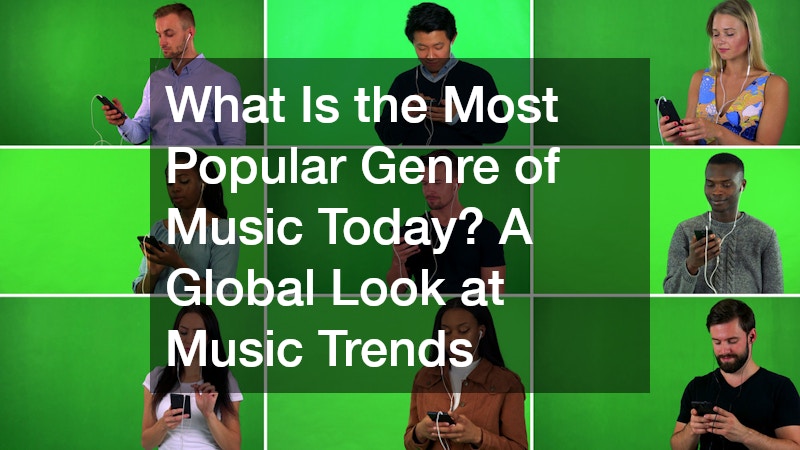

Music is a universal language that transcends borders, cultures, and time. While musical tastes vary widely across the globe, the question persists: What is the most popular genre of music today? With the rise of digital streaming, global collaborations, and social media platforms like TikTok shaping listening habits, the music landscape is more dynamic than ever. For music enthusiasts, understanding today’s most popular genre is more than a curiosity—it’s a window into shifting cultural tides, technological influence, and the evolution of global soundscapes.
This article dives into a data-backed and culture-driven exploration of the world’s favorite genres in 2025. From chart-topping hits to fan-driven trends, we’ll break down what people are listening to, why they love it, and what this means for the future of music.
The Influence of Streaming: How Music Consumption Has Changed
Over the past decade, streaming platforms have revolutionized how people discover and consume music. This shift has been a major factor in determining genre popularity.
Key Streaming Statistics:
- Spotify had over 600 million monthly active users by early 2025.
- YouTube remains the most-used platform globally for free music consumption.
- Apple Music and Amazon Music are popular in North America and Europe, often favoring curated playlists that promote major genre trends.
Why It Matters:
Streaming algorithms recommend music based on listening habits, creating echo chambers of preferred genres. This can both elevate popular genres and keep niche genres thriving in dedicated fan circles.
What Is the Most Popular Genre of Music Today?
A Global Perspective on Genre Popularity
As of 2025, pop music remains the most popular genre globally, but it’s more blended than ever. Traditional pop now incorporates elements of hip-hop, EDM, K-pop, reggaeton, and Afrobeat, making today’s “pop” more of a hybrid genre.
According to data from Spotify Wrapped, IFPI Global Music Report, and Billboard, here’s how top genres rank globally:
Top 5 Most Popular Genres in 2025:
- Pop – Still dominating charts across continents, driven by artists like Taylor Swift, BTS, and Dua Lipa.
- Hip-Hop/Rap – Highly influential, especially in the U.S., Canada, and parts of Europe.
- K-Pop – With global fan bases and viral digital content, K-pop continues to expand beyond Asia.
- Latin Music (Reggaeton & Latin Pop) – Popular across South America, Spain, and increasingly in the U.S.
- Afrobeats – Exploding in popularity with artists like Burna Boy and Rema entering global charts.
Each genre’s reach is heavily influenced by social media virality, streaming algorithms, and global artist collaborations.
Why Is Pop Music Still the Most Popular Genre?
The Evolution of Pop Music
Pop music, short for “popular,” adapts to trends and reflects current mainstream tastes. In the past, pop was defined by artists like Madonna and Michael Jackson. Today, it’s a chameleon genre that borrows from others to stay relevant.
Why Pop Dominates:
- Mass Appeal: Easy melodies, catchy hooks, and relatable lyrics.
- Global Artists: International stars bring their cultural sounds into the pop fold.
- Collaborations: Frequent genre-crossing collaborations (e.g., pop x reggaeton or pop x EDM).
- Playlist Placement: Pop songs dominate curated playlists like Spotify’s “Today’s Top Hits.”
Pop music’s dominance is not just about sound—it’s about accessibility, adaptability, and shareability.
How Regional Differences Shape Global Genre Trends
What’s Hot in Different Parts of the World?
While pop music is the overall global leader, regional preferences paint a more nuanced picture. Here’s a closer look at music tastes by region:
North America
- Dominated by pop, hip-hop, and country music.
- Trap and drill styles are popular subgenres within hip-hop.
- Country-pop crossovers are gaining popularity.
Europe
- Embraces EDM, pop, and rap.
- France and Germany have thriving local hip-hop scenes.
- Scandinavian countries favor indie-pop and singer-songwriter genres.
Asia
- K-pop is the dominant force in South Korea and is gaining in India, Japan, and Southeast Asia.
- Japan maintains a strong J-pop and anime soundtrack fanbase.
- India shows rising popularity in Bollywood music with Western influence.
Latin America
- Reggaeton, Latin pop, and regional Mexican music are hugely popular.
- Artists like Bad Bunny and Karol G have taken Latin genres into global charts.
Africa
- Afrobeats and Amapiano are leading the charge.
- Afro-fusion is creating international opportunities for African artists.
The Role of Social Media in Boosting Genre Popularity
How Platforms Like TikTok and Instagram Shape Hits
Social media has become a key player in determining what genres rise to the top. A song can go viral overnight if it’s used in a trending TikTok dance or challenge.
TikTok’s Music Influence:
- Boosts short, hook-heavy tracks.
- Launches careers of emerging artists across genres.
- Promotes genre blends (e.g., pop-rap, indie-electronic).
Instagram & YouTube Shorts:
- Visual-heavy platforms that push genre aesthetics (e.g., streetwear for hip-hop, neon aesthetics for synth-pop).
- Music video virality contributes to cross-border appeal.
Genres that thrive on social media often include:
- Hip-hop (thanks to confident visuals and beats)
- K-pop (danceable and highly visual)
- EDM (perfect for high-energy reels)
Which Genres Are Gaining Popularity Fast?
Emerging Genre Trends to Watch
Even though pop is still king, newer genres are capturing audience interest and reshaping the music landscape.
Fast-Rising Genres:
- Afrobeats: Infectious rhythms and global collaborations make it a rising global sound.
- Amapiano: A South African house music genre gaining fans across continents.
- Hyperpop: A chaotic, internet-influenced genre with distorted beats and emotional lyrics.
- Indie Pop/Rock: Gaining momentum thanks to Gen Z’s embrace of authenticity and storytelling.
These genres may not yet dominate charts globally, but they’re influencing the way mainstream music sounds.
What Makes a Genre Popular?
Key Drivers Behind Music Genre Popularity
Understanding why certain genres dominate comes down to a few critical factors:
1. Accessibility
- Streaming and social media make global sounds easily discoverable.
2. Cultural Relevance
- Lyrics and themes that resonate with current social and political issues.
3. Influencer and Celebrity Endorsements
- Stars introducing new genres to their fanbase.
4. Technology
- AI-generated music, algorithmic recommendations, and production software have all shaped genre evolution.
5. Virality
- The power of memes, remixes, and viral challenges can catapult a song—and its genre—into the spotlight.
A genre becomes popular not just through artistry, but also by its ability to connect, spread, and adapt.
What the Future Holds: Will Pop Stay on Top?
Trends That Could Disrupt Genre Dominance
While pop music’s dominance continues, music trends show signs of diversification and fragmentation. As audiences seek personalized, authentic, and culturally-rich experiences, genre boundaries are blurring.
Predictions for the Next 5 Years:
- More Genre Hybridization: Expect to see more crossovers like Latin-pop-EDM or K-pop-hip-hop.
- Rise of Non-English Genres: Listeners are increasingly embracing music in different languages.
- AI and Virtual Artists: Technology will introduce new “genres” or subgenres driven by synthetic or AI-created music.
Pop will likely remain a flexible and dominant category, but the definition of pop itself is evolving, shaped by emerging subgenres and global musical influences.
How Do Age Groups Influence Genre Popularity?
Age plays a significant role in shaping music preferences and determining the popularity of genres. Younger audiences, particularly Gen Z and Millennials, tend to favor genres like hip-hop, K-pop, and hyperpop, largely due to their strong presence on social media platforms like TikTok and YouTube. These genres resonate with their digital-native lifestyles and fast-paced content consumption habits. In contrast, older generations might lean towards classic rock, country, or adult contemporary music. Understanding these demographic differences helps explain why some genres gain quick viral traction while others maintain steady, loyal followings over time.
Can Music Festivals Affect Genre Popularity?
Music festivals are powerful cultural phenomena that can significantly boost the popularity of certain genres. Large-scale festivals like Coachella, Lollapalooza, and Tomorrowland showcase diverse lineups that highlight trending genres and emerging artists. Festivals also create immersive experiences that connect fans emotionally to genres, often sparking renewed interest and crossover appeal.
For example, EDM festivals helped propel electronic music into the mainstream, while urban music festivals have boosted hip-hop and reggaeton’s visibility. The shared community vibe and media coverage surrounding festivals often translate into increased streaming and chart success for featured genres.
What Role Do Language and Lyrics Play in Genre Popularity?
Language and lyrical content are crucial in how music genres gain popularity across different cultures. While English remains the dominant language in global pop music, there is growing acceptance and enthusiasm for songs in Spanish, Korean, Yoruba, and other languages, reflecting the rise of Latin, K-pop, and Afrobeats genres. Lyrics that address universal themes such as love, empowerment, and social issues tend to resonate widely, transcending language barriers.
Additionally, catchy choruses and repetitive hooks can help songs gain viral status regardless of language, further broadening a genre’s global appeal.
Conclusion: What Is the Most Popular Genre of Music Today?
Pop music holds the crown as the most popular genre globally, but it’s no longer a rigid category. Instead, it’s a cultural melting pot that borrows from hip-hop, K-pop, Afrobeats, Latin music, and beyond. Thanks to streaming platforms and social media, music has become more accessible, diverse, and interconnected than ever before.
For music enthusiasts, this is a golden age of discovery. Whether you’re a fan of thumping reggaeton beats, soulful Afrobeats rhythms, or synth-heavy hyperpop, today’s global music scene has something for every taste. The real winner? The listeners who get to enjoy a world of sound at their fingertips.
